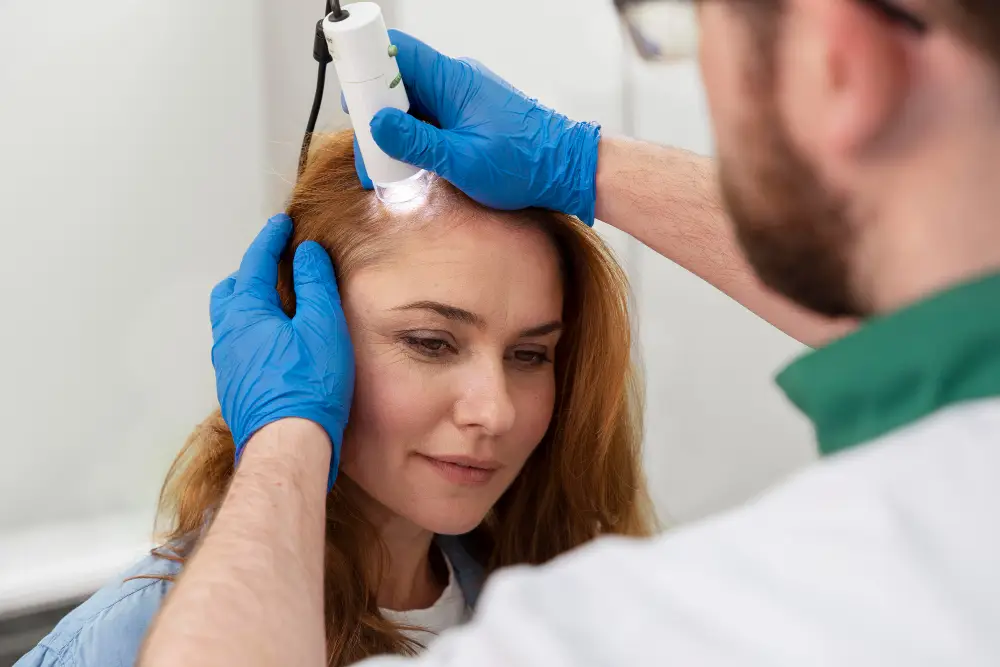
Optic Nerve Atrophy and Regenerative Pathways: A Comprehensive Guide to Your Options
Key Takeaways
- Optic nerve atrophy involves damage to the optic nerve, leading to irreversible vision loss, and requires informed exploration of all available options.
- While conventional treatments offer limited pathways for regeneration, ongoing research into regenerative approaches, including those supporting retinal ganglion cell health, offers a dimension of hope.
- Choosing a path requires understanding the scientific principles behind neuroprotection and potential cellular support, not just seeking a “treatment.”
- Pereira, Colombia, offers a patient-centric environment with robust medical infrastructure, transparent regulatory oversight (INVIMA, Ministry of Health), and a supportive cultural backdrop for individuals considering advanced care.
- A dedicated patient advocacy team can simplify the journey, addressing logistical and emotional concerns for those exploring international regenerative pathways.
Table of Contents
- Introduction: Navigating the Landscape of Optic Nerve Atrophy
- The Stakes: Understanding Optic Nerve Atrophy and Its Critical Implications
- The Conventional Approach: Current Management Strategies and Their Limitations
- The Science of Regeneration: Exploring Advanced Pathways
- The Pereira, Colombia Advantage: A New Horizon for Patient-Centered Care
- Your Branded Resource: The Ocular Regeneration Roadmap
- Our Regenerative Philosophy: A Commitment to Clarity and Support
- Overcoming Common Hesitations: Why Seeking Clarity is a Strategic Advantage
- Glossary of Key Terms
- Frequently Asked Questions (FAQ)
- Take the Next Step: Your Confidential Case Review
Introduction: Navigating the Landscape of Optic Nerve Atrophy
Receiving a diagnosis of optic nerve atrophy (ONA) can be a profoundly challenging and emotional experience. This condition, characterized by damage to the optic nerve—the critical conduit transmitting visual information from the eye to the brain—often leads to irreversible vision loss. For many, it marks a turning point where conventional medical pathways may offer limited options for regeneration or significant visual improvement.
In this guide, the team at Regencord in Pereira, Colombia, aims to provide a comprehensive, ethically framed, and educational resource. Our objective is to empower you with knowledge about optic nerve atrophy, the evolving landscape of regenerative science, and the patient-centric advantages of considering care in Pereira. This is not about promises, but about understanding the scientific foundations, discerning credible information, and navigating the patient journey with clarity and support. We understand the anxieties associated with such a diagnosis and are committed to guiding you through the complexities, helping you make an informed decision for your vision health.
The Stakes: Understanding Optic Nerve Atrophy and Its Critical Implications
The optic nerve is essentially a bundle of millions of nerve fibers, primarily axons of retinal ganglion cells (RGCs), responsible for carrying visual signals. Damage to this nerve, often due to conditions like glaucoma, ischemic optic neuropathy, trauma, or hereditary factors, results in the degeneration of these RGCs and their axons, leading to optic nerve atrophy. As the optic nerve atrophies, its ability to transmit visual information diminishes, manifesting as blurred vision, blind spots, reduced color perception, and ultimately, significant and often progressive vision loss.
The impact of ONA extends far beyond visual acuity. It affects daily independence, quality of life, and emotional well-being. According to the U.S. National Institutes of Health (NIH), optic neuropathies represent a significant cause of irreversible vision impairment globally, highlighting the critical need for effective neuroprotective or regenerative strategies. The challenge lies in the fact that, once damaged, mature nerve cells in the central nervous system, including the optic nerve, have a limited capacity for spontaneous regeneration.
Research published in PubMed-indexed journals consistently emphasizes the complexity of promoting retinal ganglion cell regeneration and achieving meaningful vision restoration. This makes the exploration of advanced and research-backed pathways, focused on neuroprotection and fostering a supportive environment for cellular health, a critical area of interest for those seeking to address ONA.
The Conventional Approach: Current Management Strategies and Their Limitations

In many regions, including North America and Europe, the conventional approach to managing optic nerve atrophy primarily focuses on identifying and treating the underlying cause, if possible, to prevent further damage. For instance, in cases of glaucoma-related ONA, treatment aims to lower intraocular pressure. For inflammatory conditions, immunosuppressants may be used. However, once the atrophy has occurred, existing damage is generally considered permanent.
While supportive therapies, low-vision aids, and rehabilitation services are crucial for maximizing residual vision and maintaining quality of life, they do not address the cellular degeneration at the heart of optic nerve atrophy. Regulatory bodies like the U.S. Food and Drug Administration (FDA) and the European Medicines Agency (EMA) have approved various treatments for the underlying causes of ONA, but currently, no approved therapy universally demonstrates the ability to restore lost optic nerve tissue or significantly regenerate retinal ganglion cells after atrophy has set in.
This limitation often leaves patients feeling that their options are exhausted, prompting them to explore innovative pathways and cutting-edge research in regenerative health, which aim to go beyond simply preventing further loss to potentially support existing cells or create a more conducive environment for cellular health.
The Science of Regeneration: Exploring Advanced Pathways
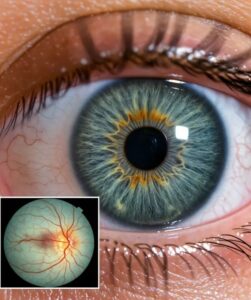
The field of regenerative medicine offers a dimension of hope for conditions like optic nerve atrophy. While not a “cure,” regenerative pathways are focused on complex biological strategies aimed at supporting the body’s natural healing mechanisms, protecting existing tissues, and potentially fostering an environment where cellular health can be optimized.
For optic nerve atrophy, current research, often highlighted by institutions like the NIH, explores several key principles:
-
Neuroprotection: Safeguarding Existing Vision
Neuroprotection involves strategies designed to prevent the degeneration of still-viable retinal ganglion cells and their axons. This is crucial in halting the progression of vision loss. Approaches can involve managing inflammation, improving blood flow, and providing neurotrophic factors that support nerve cell survival. Research cited in PubMed often discusses various agents and methods being investigated for their neuroprotective potential in optic neuropathies.
-
Retinal Ganglion Cell Regeneration: The Frontier of Vision Restoration
True regeneration of retinal ganglion cells (RGCs) is a complex challenge, as mature RGCs have limited capacity to regenerate axons after injury. However, the scientific community, as evidenced by studies registered on ClinicalTrials.gov, is actively exploring methods to stimulate this regeneration. This includes investigating various cell-based approaches to potentially replace damaged RGCs or to deliver factors that promote axon regrowth and synaptic connections. This area is at the forefront of research and careful patient selection and realistic expectations are paramount.
-
Supporting the Ocular Environment: Fostering Healing
Beyond direct cellular intervention, regenerative strategies also focus on optimizing the microenvironment of the optic nerve and retina. This can involve reducing oxidative stress, modulating immune responses, and enhancing nutrient supply to support overall ocular health. These supportive measures are designed to create the best possible conditions for any neuroprotective or regenerative efforts.
It is vital to understand that these pathways are dynamic areas of scientific investigation. Any exploration of these options must be grounded in transparent, evidence-informed discussions, prioritizing patient safety and clear, realistic expectations. The team at Regencord in Pereira, Colombia, is committed to providing this level of clarity.
The Pereira, Colombia Advantage: A New Horizon for Patient-Centered Care
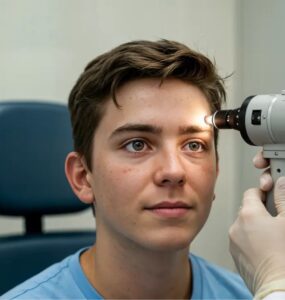
For individuals exploring advanced care options for optic nerve atrophy, the destination for treatment is as significant as the treatment itself. Pereira, Colombia, a city renowned for its stunning natural beauty in the heart of the Coffee Cultural Landscape (a UNESCO World Heritage site), is also emerging as a distinguished hub for medical tourism and regenerative health.
Robust Healthcare Infrastructure and Regulation
Colombia boasts a sophisticated healthcare system, recognized for its quality and accessibility. The medical facilities in Pereira adhere to rigorous national and international standards. Institutions like the Colombian Ministry of Health (Ministerio de Salud y Protección Social) and INVIMA (Instituto Nacional de Vigilancia de Medicamentos y Alimentos), Colombia’s equivalent of the FDA, provide stringent oversight, ensuring that medical practices and technologies meet high regulatory benchmarks. This framework assures a level of safety and legitimacy that often alleviates concerns about international medical travel.
Experienced Professionals and Advanced Technology
The medical professionals in Colombia are highly trained, many having received education and fellowships in leading global institutions. They bring a wealth of experience in diverse medical fields, including advanced regenerative health. Facilities are equipped with modern diagnostic tools and treatment technologies, ensuring that patients receive comprehensive evaluations and care commensurate with global standards.
A Patient-Centric and Culturally Supportive Environment
One of the most unique aspects of seeking care in Pereira is the deeply human-centric approach that permeates the healthcare experience. The culture emphasizes warmth, hospitality, and family support. This translates into an environment where patients are treated not just for their condition, but as whole individuals. The calming, natural surroundings of Pereira also contribute significantly to a conducive healing environment, often reducing the stress associated with intensive medical pathways.
As Synthesized Contextual Insight 2 suggests: “Pereira’s burgeoning medical tourism sector, often overlooked, offers a unique blend of cutting-edge infrastructure and a deeply human-centric approach, fostered by its vibrant, welcoming culture. This creates an environment where advanced medical procedures are delivered not just with clinical precision, but within a supportive, recovery-conducive atmosphere that often alleviates the stress typically associated with international medical travel, allowing for a more holistic healing experience.”
Cost-Effectiveness Without Compromising Quality
While the quality of care in Pereira is comparable to many developed nations, the overall cost of medical procedures and associated travel expenses is often significantly more accessible. This economic advantage allows patients to explore advanced regenerative pathways that might otherwise be financially prohibitive, without any compromise on safety or standards.
Your Branded Resource: The Ocular Regeneration Roadmap
Navigating the complexities of optic nerve atrophy and exploring potential regenerative pathways can feel overwhelming. To bring clarity and structure to this journey, the Regencord team has developed The Ocular Regeneration Roadmap.
This branded resource is designed as a practical, step-by-step guide to help you understand your condition, evaluate potential options, and plan your journey if you decide to explore regenerative pathways in Pereira. It covers essential aspects from initial information gathering to understanding treatment principles, logistical planning, and post-procedure considerations.
The Roadmap aims to:
- Demystify the Process: Break down the complex journey into manageable stages.
- Empower Informed Decisions: Provide a framework for evaluating information and asking the right questions.
- Streamline Logistics: Offer practical considerations for international travel and medical coordination.
- Set Realistic Expectations: Guide you towards understanding what regenerative pathways can realistically offer, based on current science.
As Synthesized Contextual Insight 1 emphasizes: “Patients seeking advanced ocular treatments often face a ‘decision paralysis’ due to conflicting information and the emotional weight of potential vision loss. What they truly need isn’t just data, but a curated, empathetic pathway that demystifies the complex journey from initial research to post-treatment support, making the seemingly impossible transition into an achievable, guided experience.” The Ocular Regeneration Roadmap is our commitment to providing exactly that—a guided, empathetic pathway.
Our Regenerative Philosophy: A Commitment to Clarity and Support
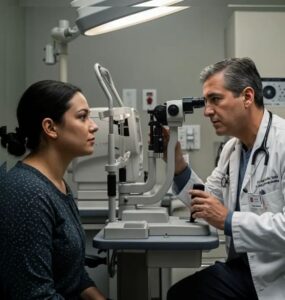
At Regencord, our philosophy is rooted in ethical patient advocacy and a deep understanding of regenerative principles. We do not make unverified claims or guarantee outcomes. Instead, our approach is centered on:
- Personalized Assessment: Every patient’s journey with optic nerve atrophy is unique. We prioritize a thorough, confidential case review to understand your specific condition, medical history, and individual needs. This forms the basis for discussing potential regenerative pathways tailored to your circumstances.
- Evidence-Informed Discussion: We believe in transparently discussing the current scientific understanding of neuroprotection and retinal ganglion cell support. Our discussions are grounded in information from reputable sources like the NIH, PubMed-indexed journals, and ClinicalTrials.gov, ensuring you receive credible insights into the potential and limitations of regenerative approaches for ONA.
- Holistic Patient Support: Beyond the medical aspects, we focus on the entire patient journey. Our team in Pereira provides comprehensive support, from initial inquiries and travel planning to on-site assistance and post-procedure coordination, ensuring a comfortable and stress-free experience.
- Empowerment Through Education: Our goal is to empower you to make well-informed decisions. We act as your advocate, providing the information and support needed to navigate the complexities of advanced regenerative health options.
We believe in fostering an environment of trust and clarity, helping you understand if regenerative pathways align with your health goals and scientific realities for optic nerve atrophy.
Overcoming Common Hesitations: Why Seeking Clarity is a Strategic Advantage
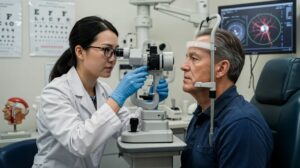
Considering advanced regenerative pathways, particularly abroad, can bring forth a range of legitimate concerns. We recognize these hesitations and are dedicated to addressing them with transparency and practical solutions:
“Is stem cell treatment for ONA truly viable, or is it too experimental?”
It’s natural to be cautious. We emphasize that regenerative approaches for optic nerve atrophy are an evolving area of science. Our focus is on pathways grounded in principles of neuroprotection and cellular support, guided by ongoing research from institutions like the NIH. We offer an evidence-informed discussion of potential benefits and limitations, based on a careful review of your individual case, ensuring realistic expectations rather than promises. The value lies in exploring what current, ethical science supports for your specific condition.
“Is medical care in Colombia safe and legitimate for such a specialized treatment?”
Colombia has a well-developed and regulated healthcare system. Our facilities operate under the strict oversight of the Colombian Ministry of Health and INVIMA, ensuring adherence to high safety and quality standards. Professionals working with Regencord have extensive training and experience. We encourage due diligence and are transparent about our accreditations and commitment to patient safety, aligning with the highest international standards of ethical care.
“The logistics of international medical travel seem incredibly complicated and overwhelming.”
We understand this concern. As Persuasive Lever 3 highlights, the perception of complexity can be a major barrier. That’s why our patient advocacy team is specifically structured to manage these details for you. From initial contact, we assist with travel arrangements, accommodation, local transportation, and provide on-ground support in Pereira. Our aim is to transform a seemingly daunting process into a streamlined, supportive journey, allowing you to focus on your health.
“What if I commit to this and my vision doesn’t improve? Is it worth the investment?”
This is a deeply personal and valid question. Our commitment is to provide you with the clearest possible understanding of your options. As Persuasive Lever 4 explains, the goal is informed decision-making. Through a confidential case review, we help determine if you are a potential candidate for regenerative pathways, discuss what might be realistically achievable based on your specific diagnosis, and ensure you have all the information to weigh the potential value. The investment is in clarity, comprehensive assessment, and exploring avenues of hope, rather than an unverified guarantee of specific visual outcomes.
Glossary of Key Terms
- Optic Nerve Atrophy (ONA): Damage to the optic nerve that leads to the degeneration of nerve fibers and irreversible vision loss.
- Retinal Ganglion Cells (RGCs): Nerve cells located in the retina that collect visual information and transmit it to the brain via their axons, which form the optic nerve.
- Neuroprotection: Strategies aimed at preserving the health and function of existing nerve cells and preventing their further degeneration.
- Regeneration: The biological process of growth and repair of damaged tissue or cells; in the context of the optic nerve, it refers to the complex challenge of regrowing damaged nerve fibers.
- Stem Cells: Undifferentiated cells of a multicellular organism that are capable of giving rise to more cells of the same type, and from which other kinds of cells arise by differentiation. (Note: Specific types are not claimed or detailed to maintain FTC compliance).
- INVIMA: Instituto Nacional de Vigilancia de Medicamentos y Alimentos, Colombia’s national regulatory agency for medicines and food.
- Regenerative Pathways: A broad term referring to treatment approaches that focus on supporting the body’s natural healing mechanisms, cellular health optimization, and potential tissue repair, rather than traditional symptom management.
Frequently Asked Questions (FAQ)
What is the typical progression of optic nerve atrophy?
The progression of ONA varies significantly based on its underlying cause. In many cases, it is progressive, meaning vision loss can worsen over time. Early diagnosis and exploration of potential pathways for neuroprotection are crucial.
What distinguishes regenerative approaches from conventional treatments for ONA?
Conventional treatments primarily aim to address the root cause and prevent further damage (e.g., lowering eye pressure in glaucoma). Regenerative approaches, while still an area of active research, focus on potentially supporting the health of existing nerve cells, fostering their function, or creating a more conducive environment for cellular health, aiming to go beyond simply halting progression.
How can I be sure about the safety of receiving treatment in Colombia?
Colombia has a well-established and regulated healthcare system. Medical facilities are overseen by the Ministry of Health and INVIMA, ensuring adherence to national safety and quality standards. Our commitment at Regencord is to provide care within these ethical and regulatory frameworks, with transparent discussions about all procedures.
What support will I receive for travel and accommodation if I choose to come to Pereira?
Our dedicated patient advocacy team provides comprehensive support for international patients. This includes assistance with travel logistics (flights, visas where applicable), arranging comfortable accommodation, local transportation, and on-ground support to ensure your stay in Pereira is as smooth and stress-free as possible.
Are there any guarantees of vision improvement with regenerative pathways?
It is crucial to understand that no medical provider can guarantee outcomes, especially for complex conditions like optic nerve atrophy. Our focus is on providing a thorough assessment, exploring evidence-informed regenerative pathways, and setting realistic expectations based on your specific condition and the current scientific understanding. The goal is to provide clarity and potential options, not unverified promises.
Take the Next Step: Your Confidential Case Review
The journey with optic nerve atrophy can be complex, but you don’t have to navigate it alone. Understanding your options and making an informed decision is the most empowering step you can take.
Discover if you are a candidate for the regenerative medicine pathways available through the team at Regencord in Pereira, Colombia. Contact us for a confidential case review. Our team is here to provide clarity, support, and a personalized pathway forward.
This article is provided for educational and informational purposes only and does not constitute medical advice. The content reflects general principles of regenerative health and patient advocacy. Individual medical decisions should always be made in consultation with a qualified healthcare professional. While Regencord is a medical provider, Veris Salus LLC acts solely as a marketing and patient coordination facilitator, connecting patients with potential treatment options. Outcomes vary, and no guarantees are made or implied.
